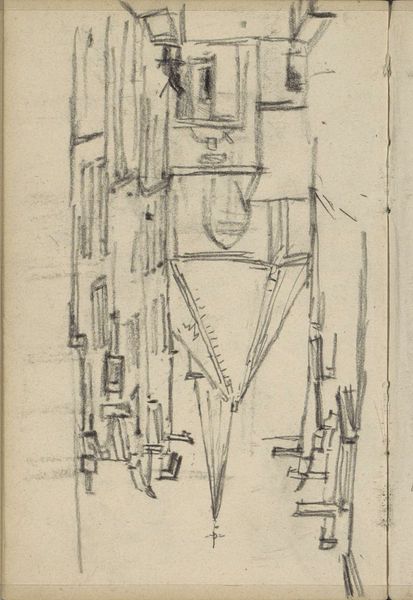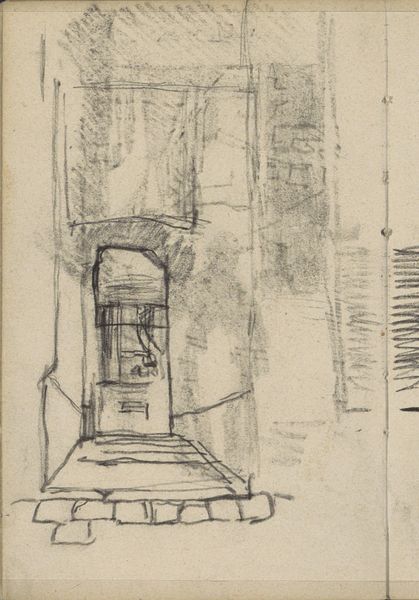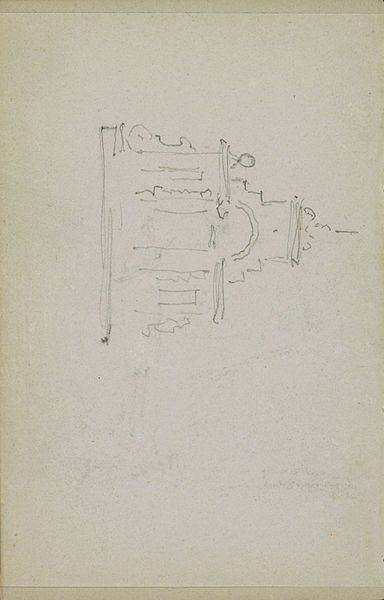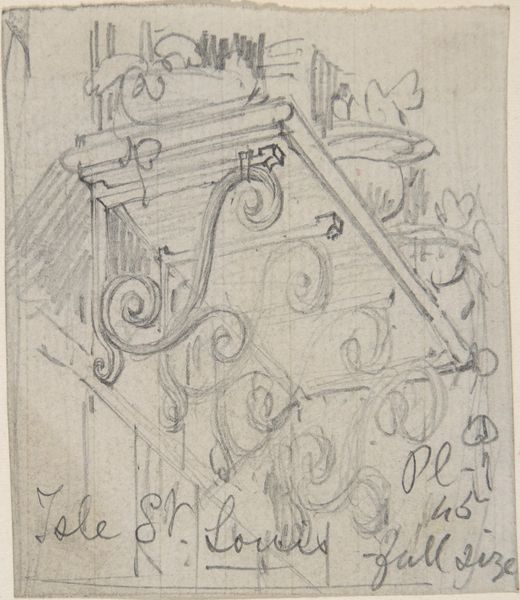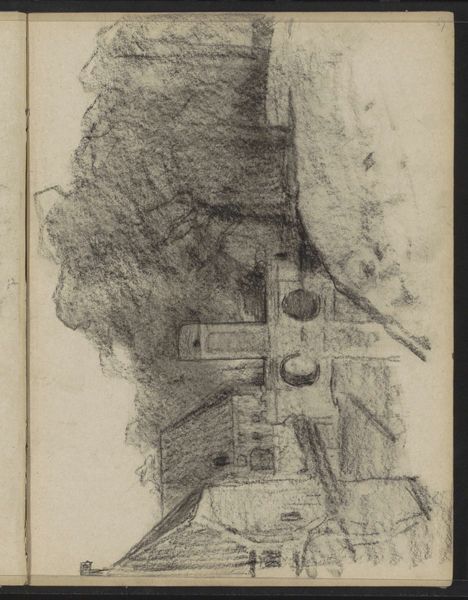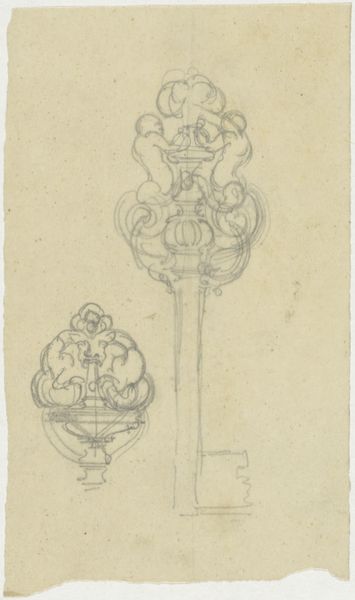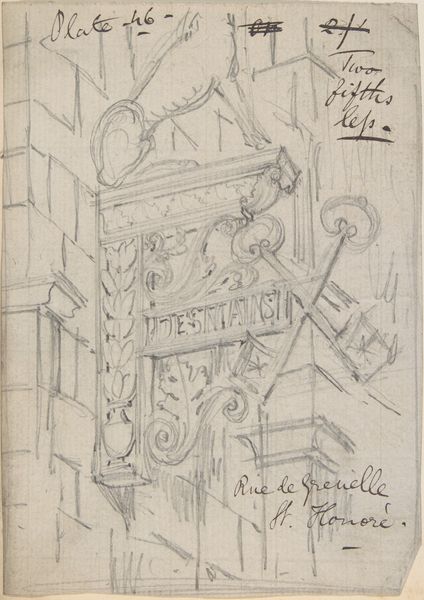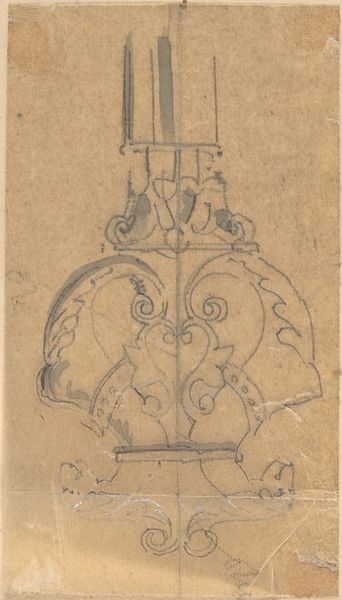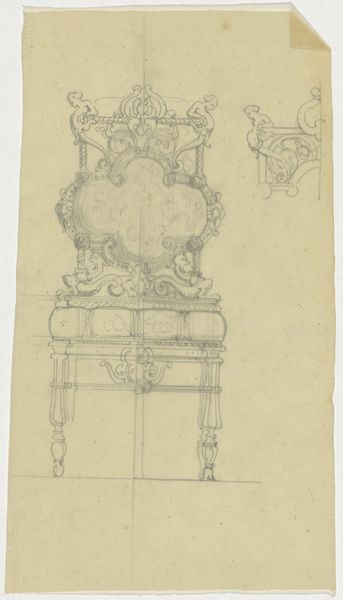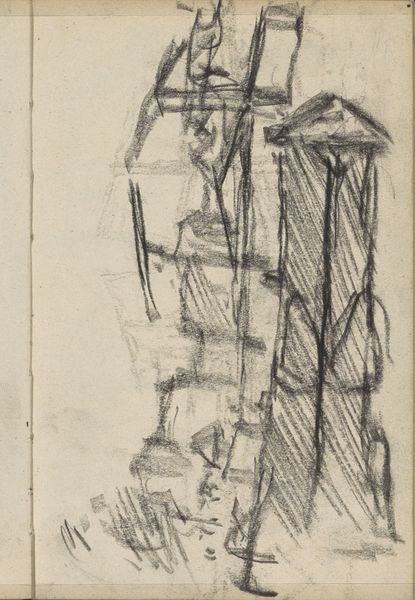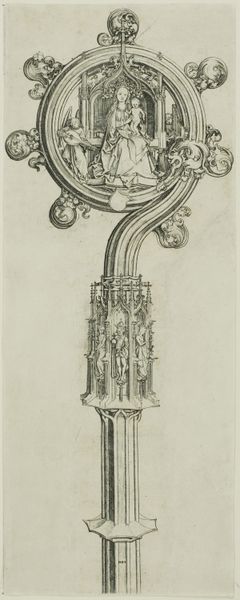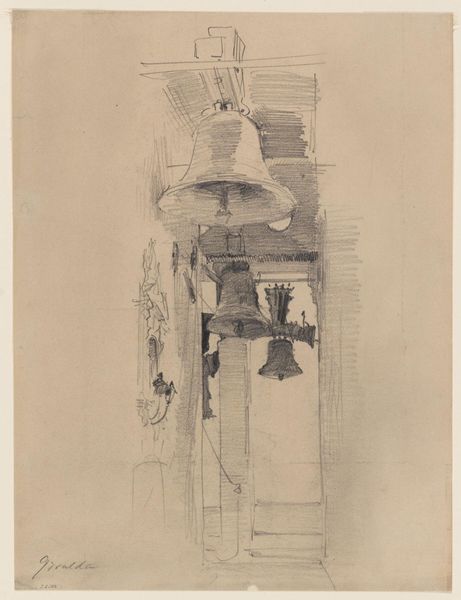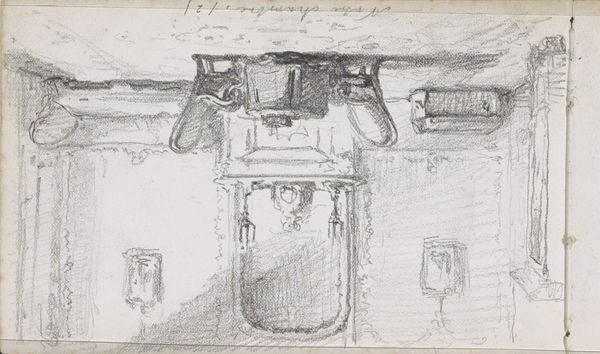
Metal Cover (to a Downspout?), Hopital St. Louis 1875 - 1885
0:00
0:00
drawing, pencil, graphite
#
drawing
#
pencil
#
graphite
#
cityscape
#
academic-art
#
realism
Dimensions: sheet: 3 9/16 x 1 7/8 in. (9.1 x 4.7 cm)
Copyright: Public Domain
Curator: At first glance, it feels like a forgotten relic, rendered with delicate pencil strokes...almost spectral. Editor: Today we are exploring “Metal Cover (to a Downspout?), Hopital St. Louis,” a graphite and pencil drawing created sometime between 1875 and 1885 by Richardson Ellson & Co. It currently resides here at the Metropolitan Museum of Art. I find myself immediately drawn to its provisional quality; it feels less like a finished piece and more like an architectural musing. Curator: The architectural detail – the downspout cover itself – speaks volumes. It's not merely functional; it’s ornamented. Look at the swirls and flourishes – they suggest a social stratum invested in aesthetics, even in the most utilitarian aspects of civic life. Hospitals are also complicated spaces to discuss. They offer much needed help for often extremely marginalized communities but are not inherently altruistic due to religious and historical regulation. Editor: Absolutely, and the symbol of the downspout is rather evocative. Consider its function: channeling water, a vital element, but also potentially destructive. In terms of iconography, it is a protector, and also representative of civil engineering which often works toward making people less vulnerable to weather catastrophes and potential plagues that impact everyday people's safety. The architectural flourishes denote not only affluence but social duty. Curator: I see the intersectionality there, the hospital as a space both caring and exclusionary, symbolized by an object mediating between necessity and extravagance. This piece pushes us to consider structures, both literal and figurative, which define how we assign belonging and deserving in the late 19th century. Editor: It is that tension—between mere survival and elaborate care – that feels compelling, revealing society’s intertwined priorities through the lens of architectural detail. It speaks to more than just Realism or Academic art, and more so touches on visual continuity. Curator: Precisely. It reminds us that even seemingly mundane urban objects embody a complex matrix of societal values and disparities that reverberate across time and communities. Editor: It leaves me thinking about how something designed for such a simple purpose can become a silent carrier of social and historical weight, constantly transforming depending on who is looking.
Comments
No comments
Be the first to comment and join the conversation on the ultimate creative platform.
